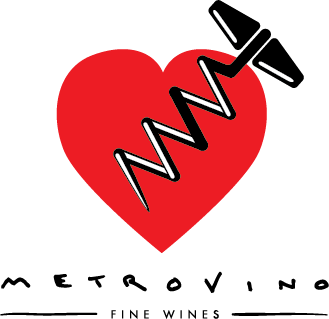by Al Drinkle
German Riesling is absolutely unprecedented in its versatility, and no other style of wine is great in so many different ways. Riesling succeeds on a vast continuum of sweetness, ranging from bone-dry to lusciously sweet, and every single step in between. And along each point of this continuum, perhaps excepting the very sweetest, one will find slim, willowy wines as well as those of great weight and richness, and all that lies betwixt. This is to say that any given vintage in Germany will produce wines that range from 6-14% alcohol, covering everything from gossamer delicacy to raw power.
Of all the wine grapes, Riesling most eloquently expresses the nuances of the place from which it comes. Others are also reliable representatives of their origins, perhaps most notably Pinot Noir and Nebbiolo, but we’re not the first to argue that Riesling is the most articulate, even among these. Seemingly insignificant variants of aspect, exposure, mesoclimate and altitude are amplified in the glass, and nuances of soil type are explicitly expressed in the resulting wine. When ushered into being by a good grower, Riesling is far too sensitive to take any of these influences (and other unseen ones) for granted, weaving the story of its birthplace deep into the essence of its flavours. When tasting stylistically similar wines from a skilled Riesling producer with holdings in various sites, the wines often taste like they’re from different planets, nevermind different vineyards.
Riesling’s peerless terroir transparency is a facet of its general propensity towards complexity. Riesling can effortlessly and simultaneously express myriad disparate but complimentary flavours and textures, indexing them in a clear and enjoyable way that many other grapes are simply incapable of. The complexity of Riesling isn’t hectic, nor is it convoluted under the pretence that more complicated is more good. A complex wine can be more rewarding for those who have the time for shading and the detail, whereas complicated flavours can be impressive, but are also distracting and fatiguing. At its best, Riesling is gloriously symphonic instead of aggravatingly cryptic. It holds mysteries, but not at the expense of deliciousness.
German Riesling usually offers bonkers value through an absolutely warped quality and price ratio. All else being equal, an excellent $25 German Riesling will offer more intricacy of flavour than an excellent $25 Cabernet Sauvignon, Pinot Gris, Malbec or anything else that you care to compare it to, and the same applies as you work your way up the pricing hierarchy.
Good German Riesling ages magnificently. This isn’t to say that it merely withstands the vagaries of time, but that it improves as it gets older. As the years pass, stark minerality and extroverted fruit tend to melt into limpid and sublime nuances and the flavours develop even further profundity and haunting complexity. The best dry and off-dry German Rieslings will be enjoyable for at least a couple of decades, and the most supernal dessert styles should be drinkable over a couple generations. These might be understatements. Most importantly, Riesling can provide great pleasure at every stage of development.
German Riesling is exceedingly versatile with food. Despite its assertive character and multiplicity of moving parts, Riesling is more than happy to step out of the limelight and simply offer accent and support to whatever it is you’re eating. Considering its many German manifestations, one may choose amongst Rieslings of various weight, sweetness and age to fine-tune pairings; but rare is the dish that can’t be complimented by one Riesling or another. It scores extra points for being particularly accommodating to cuisines that evolved in cultures without wine traditions of their own. But its presumed effectiveness should not be restricted to the Eastern or the exotic because Riesling’s adaptability is virtually unprecedented, even if only because its soprano refrain provides such lively counterpoint while rarely clashing and competing. This is a difficult balance to strike, and a commendable virtue.
As a final consideration, the dedication and commitment on the part of German winegrowers is touching and admirable. Riesling is usually grown in parts of Germany that aren’t overly hospitable to farming. In the Mosel, Saar, Nahe, and parts of the Rheingau and Rheinhessen, the best vineyards are on insanely steep slopes and anything but the most crude mechanization is an impossibility. Additionally, keep in mind how far north these wines are grown and that harvest usually takes place in October and might extend into mid-November – not exactly T-shirt and shorts weather. At this northern viticultural extreme, rot and disease pressure in the vineyards can be significant. Needless to say, most of the young Germans who have chosen the cultivation of Riesling as their vocation have also decided that they’re going to put all their efforts into doing a great job at it. It’s not the kind of career path that attracts underachievers and the growers deserve the fame and money that some of their colleagues in less foreboding regions enjoy.
As you can see, even if we restrict ourselves to impartial facts, it's obvious that German Riesling is the greatest wine on the planet.



